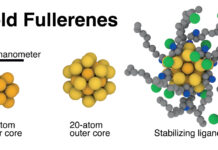
Large-format additive manufacturing (LFAM) is relatively new to the 3D printing marketplace but has quickly established a promising niche. Essentially, LFAM is a marriage of the motion systems used in today’s precision CNC-machining or laser-cutting machinery and 3D printing/extrusion heads modified for use in the larger format. Although much attention has been focused on using large-format 3D printers to build tooling for composite molding processes, they have also found use in building the finished parts themselves in one-off and very low-volume production. In either case, the technology is promising, and initial work, and the cost analyses derived from that work, suggests that large 3D printers, compared to current composite tooling and part fabrication practices, can offer significant cost savings, especially in total labor hours.
Benchmarking part-printing potential
Although the development of the technology is ongoing, and the sample size of workpieces is still relatively small, an early demonstration project that entailed the printing of an excavator cab from carbon fiber-reinforced acrylonitrile butadiene styrene (ABS) provides a benchmark and insight into its capability to manufacture composite parts.
The cab was designed and manufactured by a consortium of industry and academic partners, called the Center for Compact and Efficient Fluid Power (Minneapolis, MN, US) using Cincinnati Inc.’s (Harrison, OH, US) trademarked Big Area Additive Manufacturing (BAAM) machine. The cab components were printed at the US Department of Energy’s Oak Ridge National Laboratory (ORNL) Manufacturing Demonstration Facility (Knoxville, TN, US). Together with a 7-ft (2.13m) long excavator arm, 3D-printed from carbon steel, and a 13-lb (5.9 kg) aluminum heat exchanger laser printed via a powder-bed-based process, the cab is one component of the first fully functional, hydraulically powered excavator with its key, critical components built using additive manufacturing technology. The project is referred to holistically as the Additive Manufactured Excavator (AME), and the machine was unveiled at the 2017 ConExpo/ConAGG show in Las Vegas, NV, US.
Read more: Additive manufacturing: Big and going commercial
thumbnail courtesy of compositesworld.com











